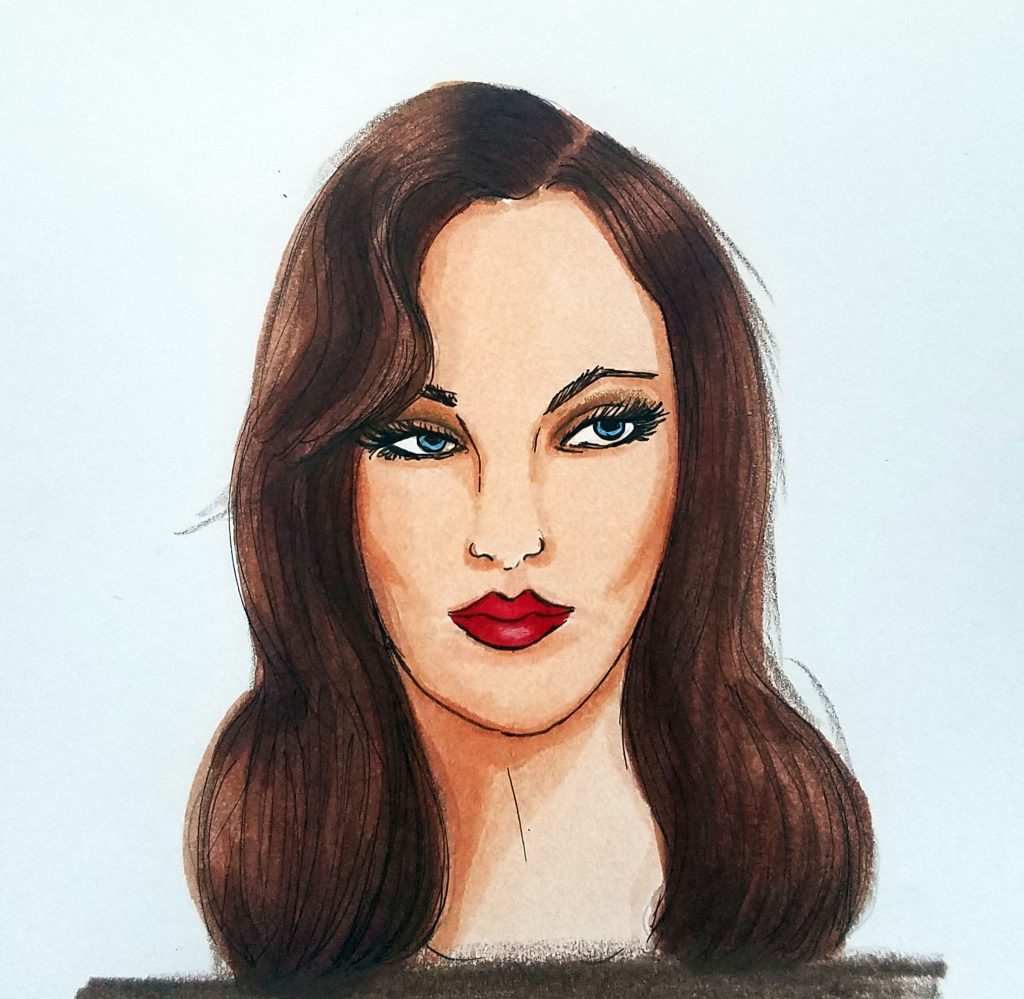Hair is definitely anther part of a fashion illustration that can affect the entire mood and the story you want to tell. So far I have been keeping the hair drawing very simple but I am eager to practice and improve in this area as it is one of my weak spots.
Hairstyle is a very important part of the figure and choosing the right hairstyle can completely transform face and even convey character, style and social class. For example if you take the same face and add different hairstyles to it, the face will take on different characteristics. It may appear younger, more glamourous or professional.
The best way to draw hair is to first sketch a simple shape of the hairstyle just outlining the edges. After that you add some shape and layers to the hair and then at the end add details such as fine lines and some hair flying over the edges, darker spots in the partings and so on.
Try sketching a hairstyle using an HB pencil first and then when you get a grasp on that move on to practice drawing hair in color and different media. Draw closer lines on the areas where hair is full or tied up.
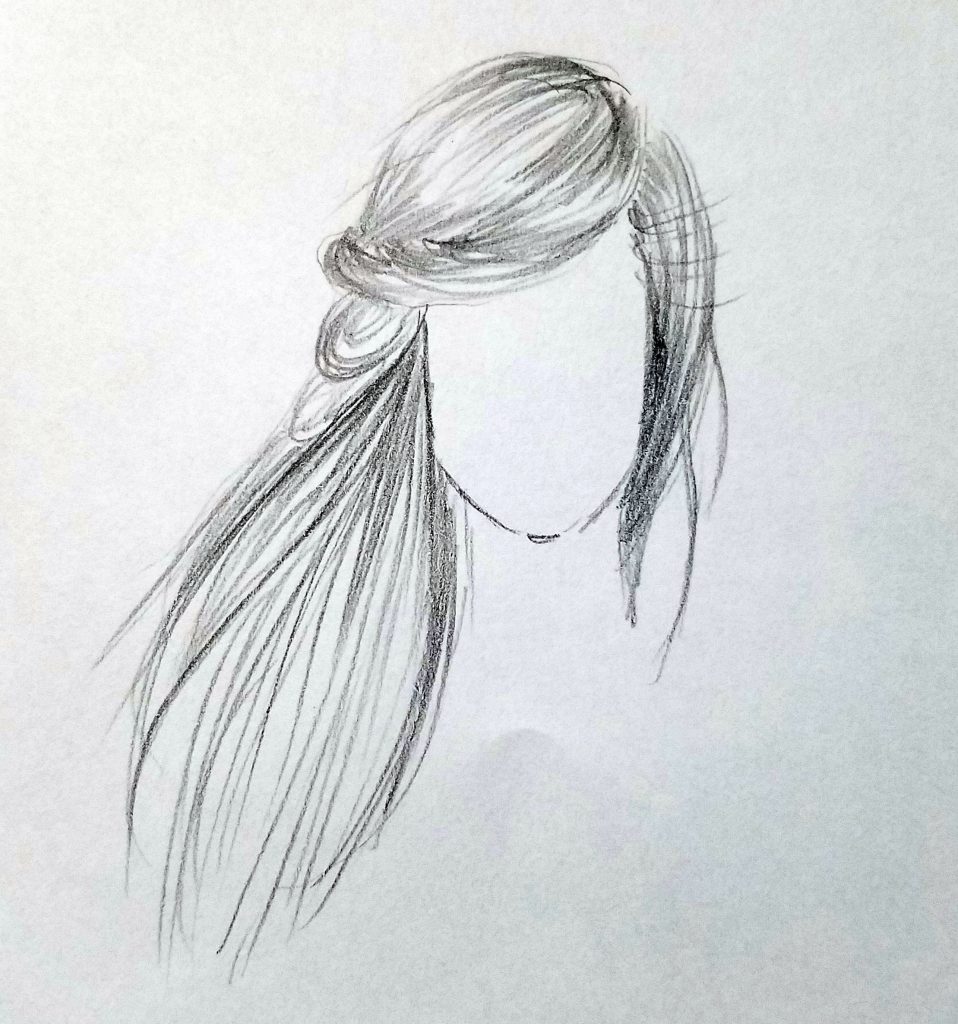
Exercise Tip: Take a fashion magazine and find hairstyles that you like. Use tracing paper to trace them and fill in the silhouette with pencil.
Drawing Straight Hair
It can be easily drawn using straight line and drawing the edges of the hair shape first. The hairline starts 1/4 of the distance down from the top of the head.
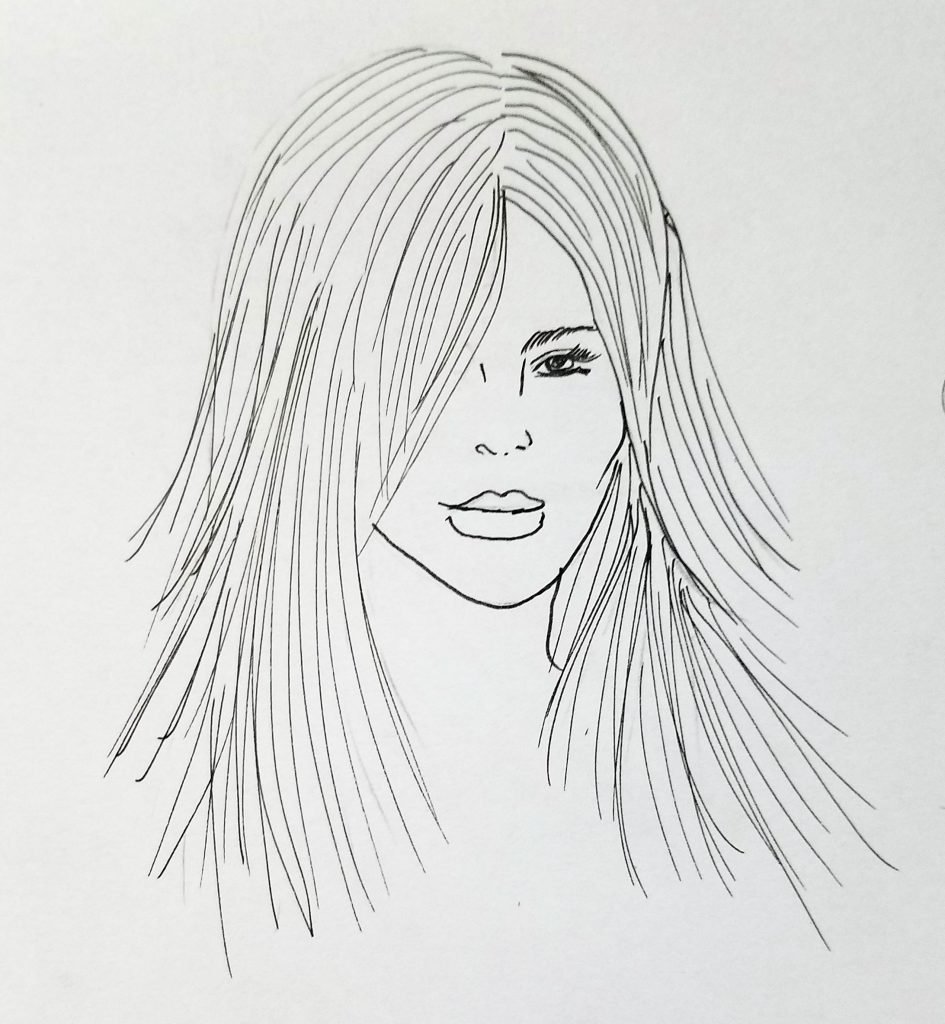
Drawing Curly Hair
When drawing curls start with a basic shape as well and fill it out.
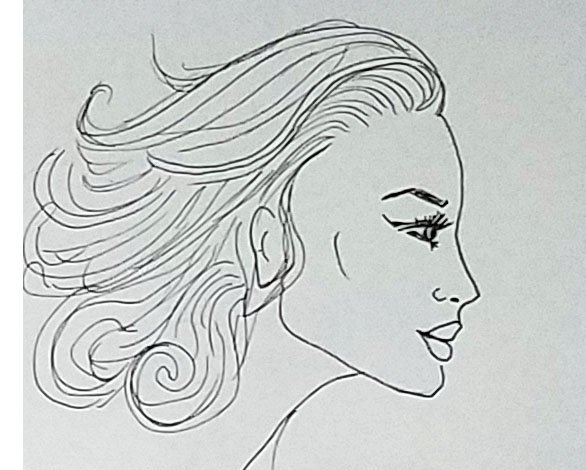
Just try to think of hair as a combination of simple shapes. Each shape should have highlights, mid-tones and shadows to make it look 3-dimensional. Different line quantities can convey a variety of hair types and styles.
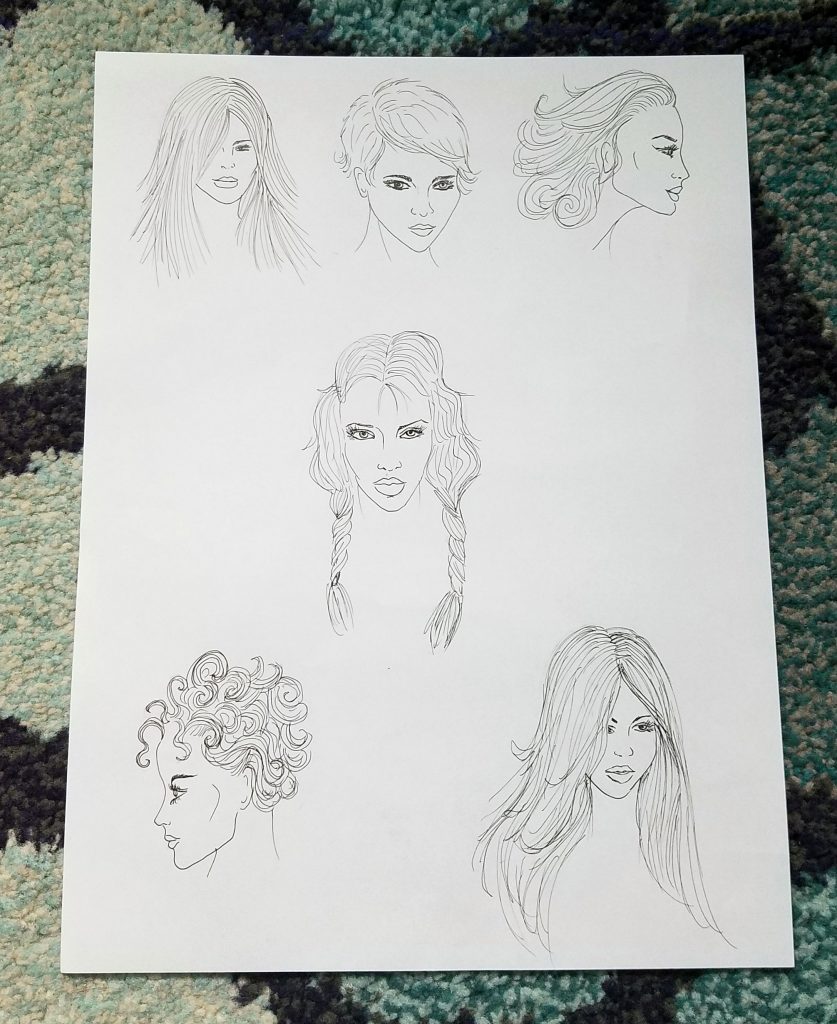
Coloring Hair
When it comes to coloring hair I use the same principle as for any other part. Pick 3 shades-light, medium and dark that are in the same color range. Start with light color covering the entire surface, then add medium shade everywhere else except highlights. And then use the dark color for parts that are away from the light source, like hair against the face or layers underneath. I also like to use a Prismacolor Pencil to draw some individual strands and make it a bit more realistic.
